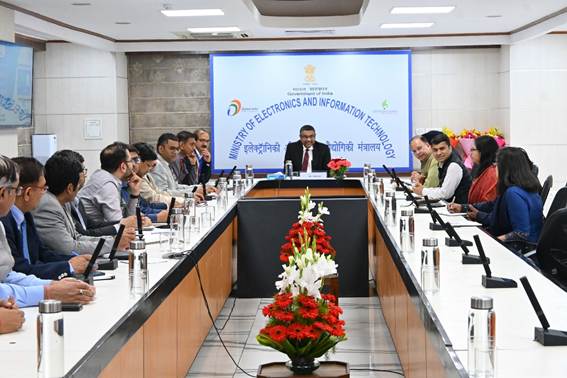In a country where the sky often symbolizes hope and aspiration, the dream of flying has remained an elusive luxury for many. This dream began to take shape with the launch of the Regional Connectivity Scheme (RCS) – UDAN, or “Ude Desh ka Aam Nagrik,” on October 21, 2016. Spearheaded by the Ministry of Civil Aviation (MoCA), UDAN aims to enhance regional air connectivity from unserved and underserved airports across India, making air travel affordable for the masses. As it celebrates its eight anniversary, UDAN stands as a testament to the commitment of the Indian government to improve infrastructure and connectivity, especially in remote regions.
The story of UDAN is deeply rooted in the vision of Prime Minister Narendra Modi, who in a pivotal meeting before the National Civil Aviation Policy was announced, emphasised the need to democratize air travel. He famously remarked that he wanted to see people wearing slippers boarding planes, a sentiment that ignited the vision for a more inclusive aviation sector. This commitment to the common man’s dreams led to the birth of UDAN.
The first UDAN flight took off on April 27, 2017, connecting the serene hills of Shimla to the bustling metropolis of Delhi. This inaugural flight marked the beginning of a transformative journey in Indian aviation, one that would open up the skies to countless citizens. UDAN operates on a market-driven model, where airlines assess demand on specific routes and submit proposals during bidding rounds. The scheme incentivizes airlines to connect underserved regions by offering them support through Viability Gap Funding (VGF) and various concessions provided by airport operators, the Central Government, and State Governments.
The Indian aviation landscape has undergone a significant transformation under the UDAN scheme. 601 routes, including helicopter routes, have been operationalized, effectively connecting states and Union Territories. Notably, around 28% of these routes serve the remotest locations, enhancing accessibility across challenging terrains. A total of 86 aerodromes comprising 71 airports, 13 heliports, and 2 water aerodromes have been operationalized, facilitating the travel of over 1.44 crore passengers across more than 2.8 lakh flights. Since its inception, fixed-wing operations have cumulatively covered approximately 112 crore kilometres, roughly equivalent to circumnavigating the globe around 28,000 times. The number of operational airports in the country has doubled from 74 in 2014 to 157 in 2024 and the aim is to increase this number to 350-400 by 2047. The domestic air passengers have more than doubled in the past decade, with Indian airlines significantly expanding their fleets.
The RCS-UDAN scheme has played a pivotal role in revitalising the civil aviation industry in India. Over the past seven years, it has catalysed the emergence of many new and successful airlines. Regional carriers such as Flybig, Star Air, IndiaOne Air, and Fly91 have benefited from the scheme, developing sustainable business models and contributing to a burgeoning ecosystem for regional air travel. The incremental expansion of the scheme has also generated a rising demand for new aircraft of all sizes, broadening the spectrum of planes deployed on RCS routes. This includes a diverse fleet, featuring the Airbus 320/321, Boeing 737, ATR 42 and 72, DHC Q400, Twin Otter, Embraer 145 and 175, Tecnam P2006T, Cessna 208B Grand Caravan EX, Dornier 228, Airbus H130, and Bell 407. Notably, Indian carriers have placed orders for over 1,000 aircraft slated for delivery in the next 10-15 years, significantly augmenting the existing fleet of approximately 800 planes.
RCS-UDAN is not solely dedicated to offering last-mile connectivity to tier-2 and tier-3 cities; it also stands as a prominent contributor to the burgeoning tourism sector. Initiatives like UDAN 3.0 have introduced tourism routes connecting several destinations in the Northeast region, while UDAN 5.1 is focused on expanding helicopter services in hilly areas to stimulate tourism, hospitality, and local economic growth.
Significant destinations like Khajuraho, Deoghar, Amritsar, and Kishangarh (Ajmer) are now more accessible, catering to the religious tourism segment. Furthermore, the introduction of airports in Pasighat, Ziro, Hollongi, and Tezu has spurred growth in the Northeast’s tourism industry. Notably, Agatti Island has also been included in the Indian aviation map, enhancing tourism in Lakshadweep. From Mundra in Gujarat to Tezu in Arunachal Pradesh, and Kullu in Himachal Pradesh to Salem in Tamil Nadu, RCS-UDAN has connected 34 states and Union Territories across the country. A total of 86 aerodromes have been operationalized under UDAN, including ten in the Northeast region and two heliports. Airports like Darbhanga, Prayagraj, Hubli, Belgaum, and Kannur are becoming increasingly sustainable, with many non-RCS commercial flights operating from these locations.
-Praver Tripathi (DD India)




















